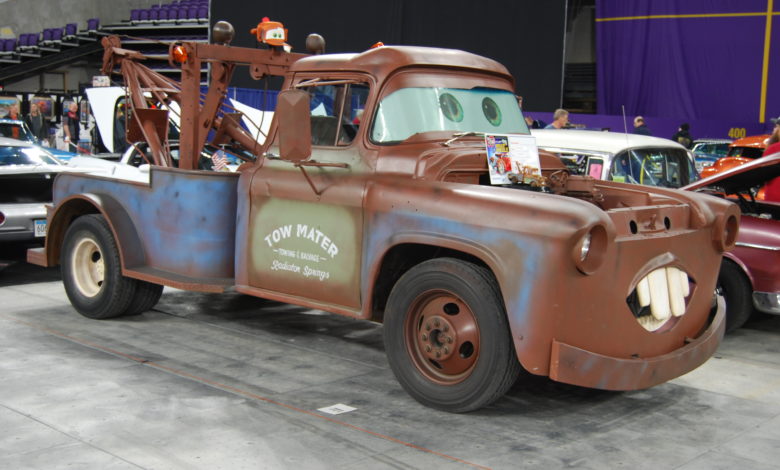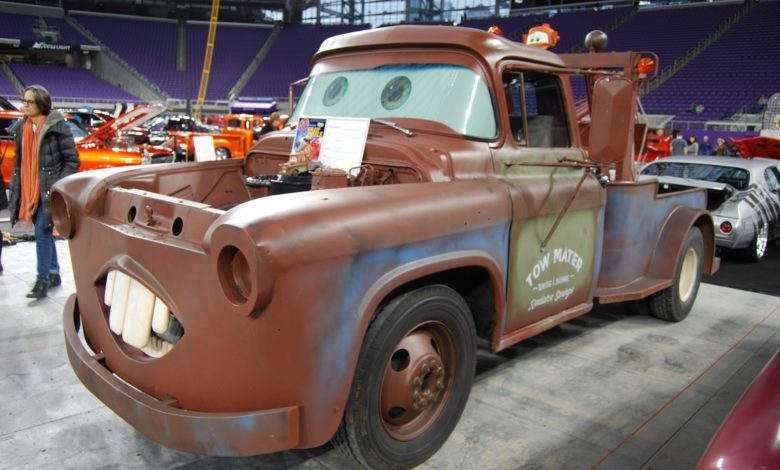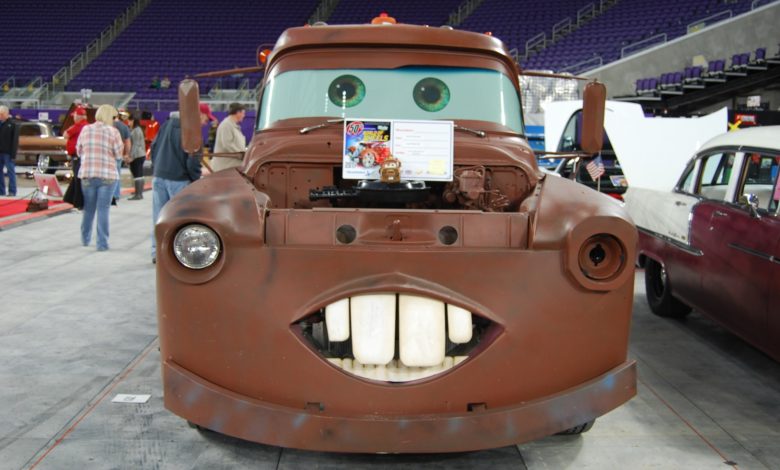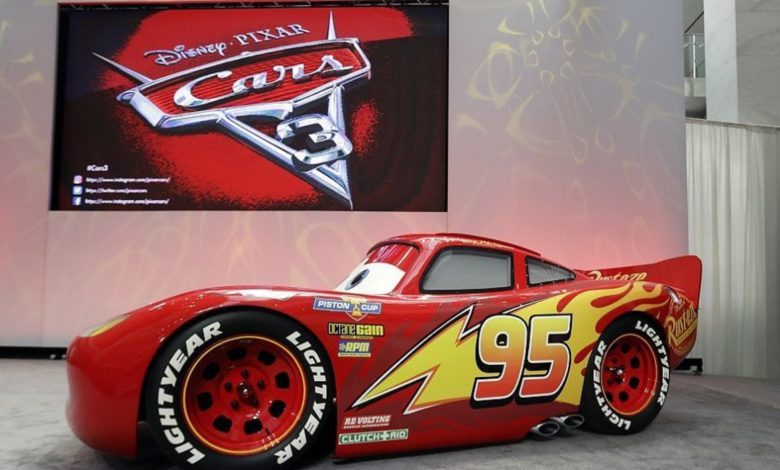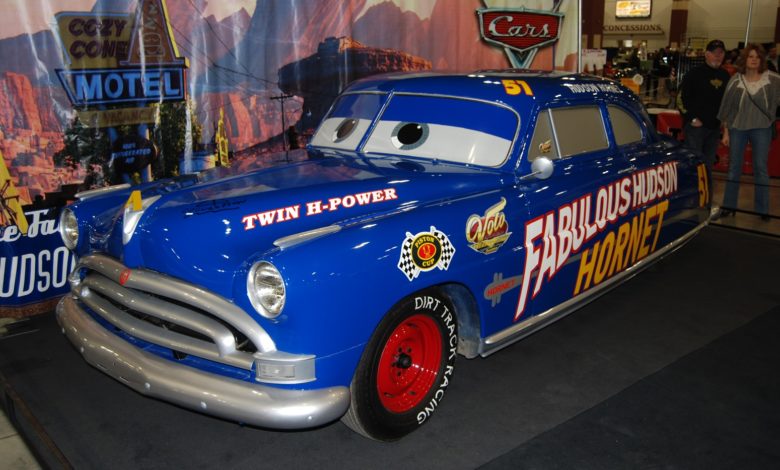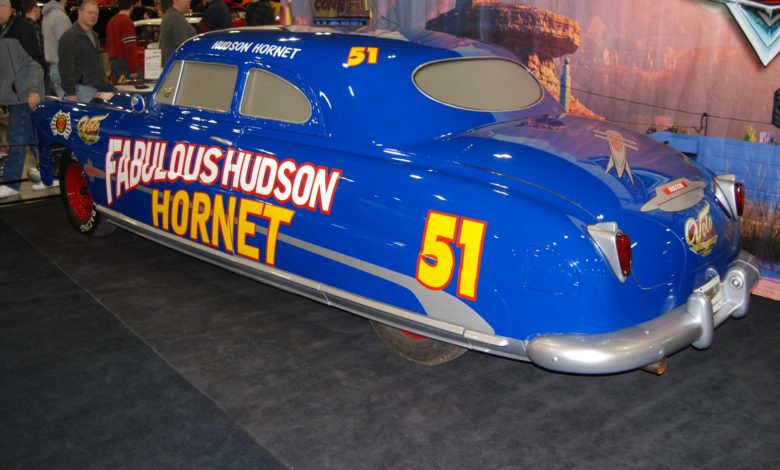Meet Pixar’s Favorite Custom Shop
Customs By Eddie Paul was the automotive division of E.P. Industries that specialized in fabricating custom cars, rods, trucks, restorations and motorcycles. The company also fabricated motion picture stunt vehicles, show vehicles, props and special effects under extreme deadlines for major Hollywood film and television studios.
E.P. Industries built more than 15 vehicles for major movie and TV productions. Many considered E.P. Industries owner Eddie Paul to be Hollywood’s best kept secret. His first film cars were 36 hot rods that he built, in two weeks, for the movie Grease. Paul’s passing in 2016 at the age of 69 was a shock to all who knew him.
When Pixar Animation wanted to get some actual vehicles made, based on the cartoon cars in its Cars movie, the studio turned to Paul. Pixar wanted three vehicles built to use at the movie’s premiere and on a road trip to promote the film.
Mater the tow truck (a.k.a. Tow Mater) was the bait to get Paul involved. Pixar knew that Paul badly wanted to build the lovable hillbilly hauler. The studio said he could have the job if he first built the race car Lightning McQueen—made from a Trans Am—and female lead Sally Carrera, which Eddie made by shortening the wheelbase of a real Porsche.
Paul got the Pixar cars done on schedule and got the tow truck project started. Pixar sent images of the animated tow truck, which Eddie scaled up to full size. He then found a big-block ‘77 Chevy dually pickup with automatic and went to work. The frame was shortened two feet to give the truck the right proportions. The rear-end was narrowed by about a foot. Also, a few of the rear spring leaves were removed to achieve a softer ride.
Duplicating the mouth of the animated Mater was a problem. Eddie finally moved the radiator inside the cab. This allowed room for Mater’s crooked buck teeth. Roll bar tubing was used to carry the water to the radiator in the cab. A wrecker bed was made from steel and the truck cab was made from ¼-inch thick ABS plastic using a system that Eddie’s company developed to build cars for the movie Taxi.
The job started by changing the animation files to CNC-design data, which was loaded into EPI’s custom-router. The machine then carved wooden forms to the exact shapes of the fenders and doors of the movie car.
After 10 hours, Eddie’s designers brought the wooden form to a 4-by-8-foot vacuum-forming table. They clamped a large sheet of plastic in place and heated it for about 10 minutes until it got soft. Then, the soft sheet of plastic was lowered over the wooden form and the vacuum was turned on to evacuate all the air and pull the panel into shape.
After going through the vacuum-forming process, the part was cut out and attached to the truck using rivets and a special epoxy glue. The seams were filled with body filler and sanded into proper shape.
Vehicles in the Cars movie have eye-lid windshields with white corneas and colored irises. The windshield for Tow Mater was made from clear acrylic and had a vinyl wrap added to the outside by Ape Wraps. This allowed the driver to see out, although people outside the truck could not see in.
Throughout the movie, except in one flashback sequence, Tow Mater looks old and rusty. Eddie Paul had to replicate the truck’s time-worn look. He did this with a special aging paint. A few dings and dents were added in precise locations using a torch and hammer. EPI built Tow Mater in four to five weeks. The project consumed about 20 sheets of ABS plastic, six sheets of steel and six gallons of SEM paint.
Paul also wrote four how-to books for F + W Publications. They explained how to do custom body work and how to build movie cars. The books are no longer in print, but remainder copies are sold on eBay and Amazon. If your shop is interested in building movie cars, you may want to find copies of Paul’s books and read them.
